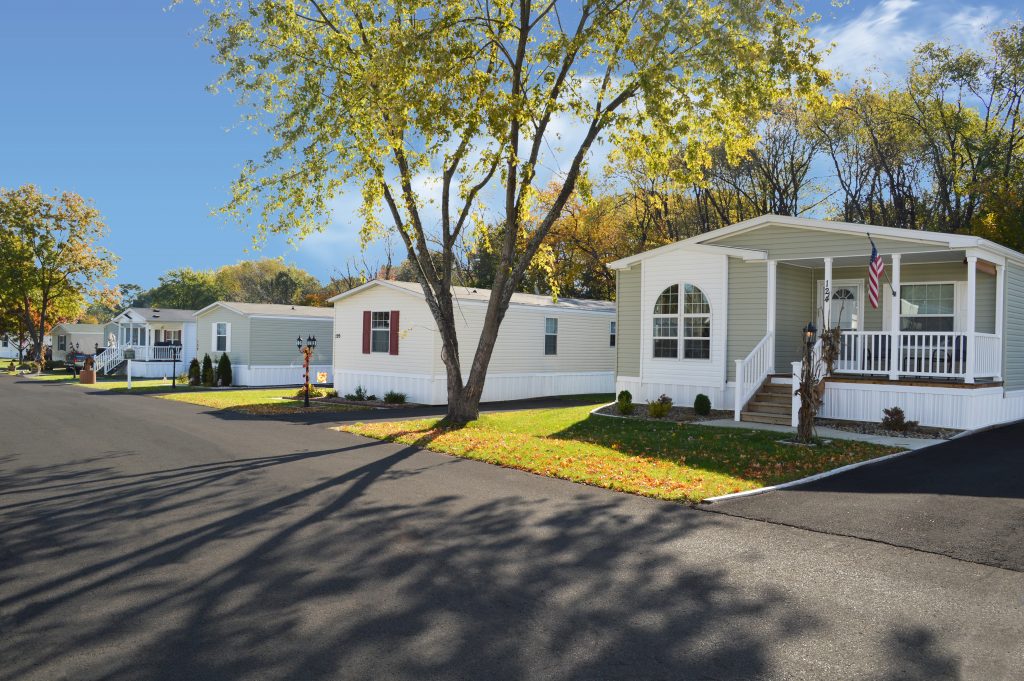What is the Best Strategy for Filling Mobile Home Lots?
It’s the community owners’ lament: In filling vacant mobile home lots, do I rent, lease-option or sell with outside financing my community-owned homes?
Author’s note: Swim in safe harbors! My 30 years of experience in being the operating partner in 25 MH communities, buying, selling, renting, or leasing over 2,000 mobile homes and speaking to national and regional meetings of community owners over the past 10 years, positions me as uniquely qualified to have pointed opinions on the content I am sharing. However, my opinions and comments here are for informational purposes only, and here is why: when dealing with contractual agreements of any kind, seek out the advice of good legal counsel before implementing any new concepts or processes. In other words, “forewarned is forearmed”.
These are the points I will cover in regard to filling vacant lots:
- Requiring outside chattel financing and only “selling” homes in my community
- Renting homes fast-tracks a community fill-up
- Taking the angst out of the lease and an option to buy
Outside Chattel Financing
In a perfect world for community owners, chattel financing would still be prevalent… but it is not. Limiting yourself to outside financing or cash sales slows the sales faucet down to a trickle. This option is best used when an owner has a high-quality community with a limited number of vacancies. Say, two to four homes at any given time. If so, upgrade your community, bring in quality homes and cherry-pick your buyers.
The Renting of Manufactured Homes
 Renting manufactured homes to fill vacant lots is the best option when you have substantial vacancies because of the ability to go about quickly filling vacant sites. At my 300-site community in metropolitan Atlanta, we own 200-plus homes and rent an average of eight to 12 every month. We offer each prospect, in writing, three options to get into a home. Purchase with outside financing at a discounted rental rate; lease and an option with a $2,000 option fee; or just rent.
Renting manufactured homes to fill vacant lots is the best option when you have substantial vacancies because of the ability to go about quickly filling vacant sites. At my 300-site community in metropolitan Atlanta, we own 200-plus homes and rent an average of eight to 12 every month. We offer each prospect, in writing, three options to get into a home. Purchase with outside financing at a discounted rental rate; lease and an option with a $2,000 option fee; or just rent.
In four years of ownership: Zero financed sales, three lease and an option, and 200 homes rented. In the mid-2000s, I was involved with 22 communities. We owned 1,500 homes, and virtually everyone we drew in by marketing preferred to rent.
Caveat to Renting Manufactured Homes
This was all in the management of mid-size family parks in the Carolinas, so those with 55+ communities or communities in upstate New York, Oregon, Washington state and the like — where single-family rents are through the roof and there is minimal housing availability — likely would have a different experience.
If you have a community with 15-plus vacancies, then the fastest fill-up will be the true rental model.

The Lease AND an Option to Purchase
My view on the LO (lease/option to purchase) is that this model should not be used to dump an older home on someone just so you can avoid the expense and time of repairs. The opportunity should be used to stabilize your tenant base by slowing resident turnover in your community. A $2,000 or $3,000 option fee can help restrain the occupant from impulsively “jumping ship.”
My recommendations: Do a quality remodeling job to attract a more desirable, more stable tenant. Accept that the majority of your residents will be living week-to-week. There is limited disposable income to pay for emergency repairs. I have seen the need to replace a hot water tank result in a move-out when they can find a $99 move-in special somewhere.
So, offer the lease-and-an-option tenant the ability to have the community repair more expensive items during the term and add that cost to the end of the lease. Require them to complete small repairs (less than $200) themselves, but if needed, the CO will do it and add the cost to their next month’s rent.
Caveats to Lease and an Option
Don’t offer to “sell” a home using an LO or rent-to-home program. If it walks like a duck and quacks like a duck, it will be viewed as a duck (sales contract), and you may be in trouble.
Don’t offer a contract where a percentage of the monthly payment is credited to reduce the principal balance of the home. That is “amortization” or, in other words, a “loan.” Quack, quack. Optioning real estate or other things such as businesses or homes has been a viable legal transaction technique in the United States for years. It works best like this: Determine the monthly payment you need, the term you want and determine the reasonable residual cash value of the home at the end of the lease term. It cannot be zero, or that is amortization! Quack, quack.
There are two contracts, not one. An option contract, which is an agreement to sell the home at a predetermined price and at a predetermined time in the future for a one-time fee (i.e. $3,000); along with the agreement that the optionee will lease the home and follow through on the payment and upkeep terms through the end of the lease period.
The optionor agrees to deliver the title unencumbered, if the lease optionee elects to exercise the option at that time and meets all the terms of the lease. The lease of the home itself is a separate document.
Recommendation: You are selling an option, not selling the home. If you agonize over the legality of the “lease and an option,” then don’t do it. Just rent the home.










